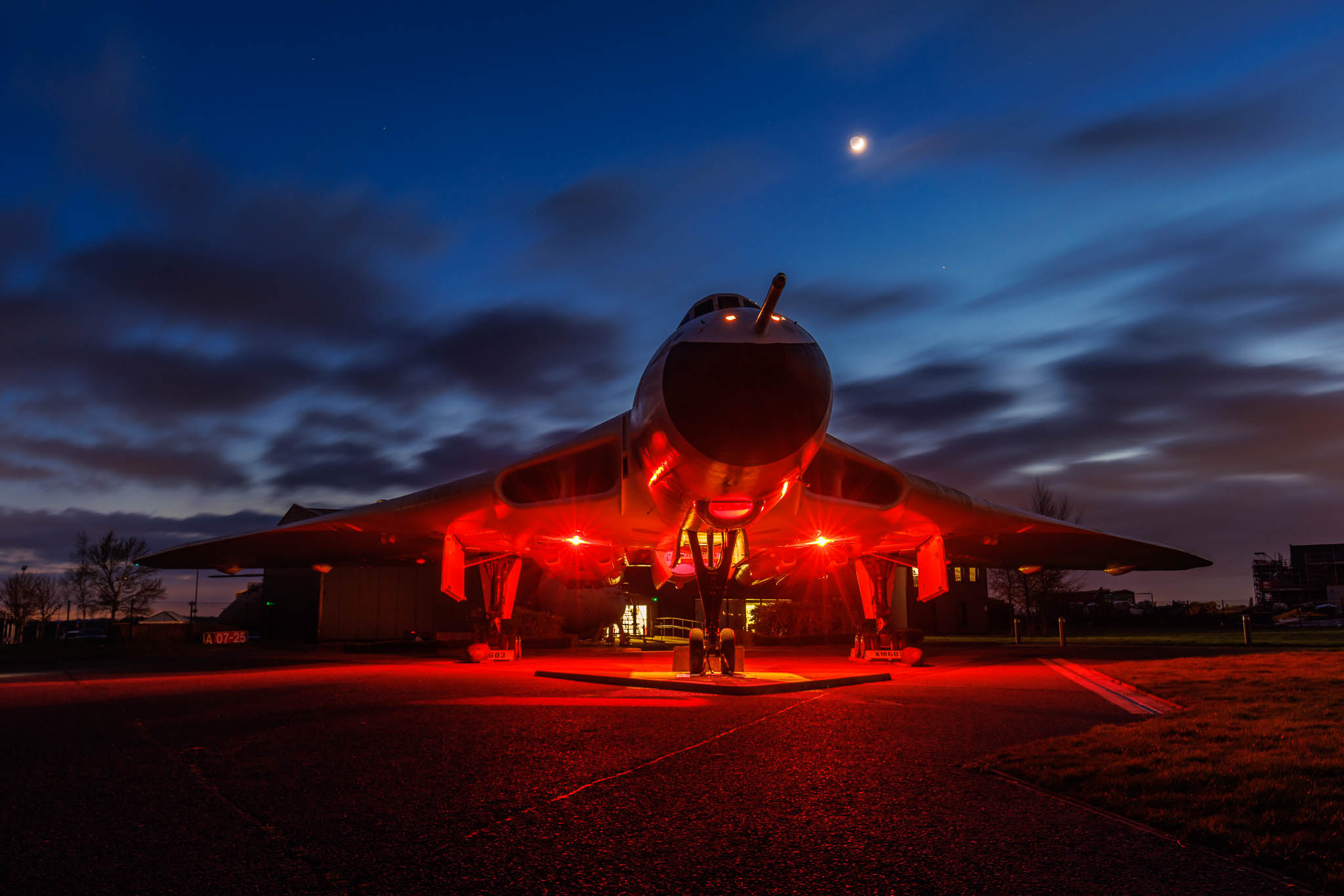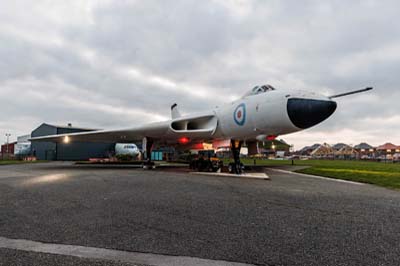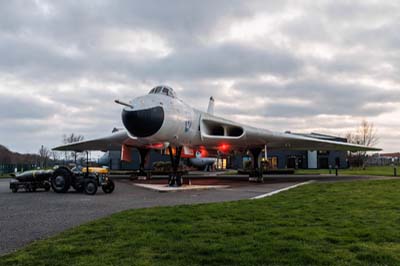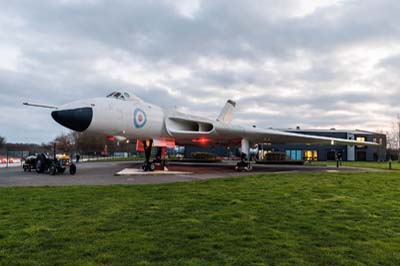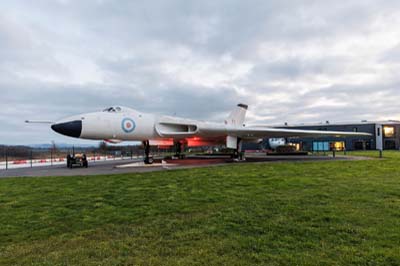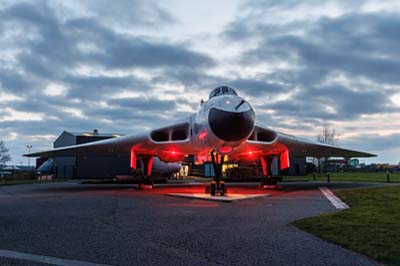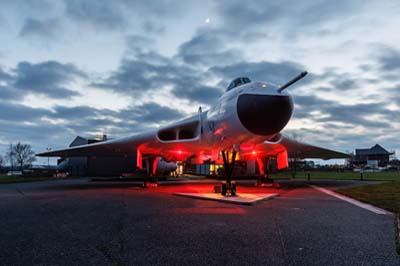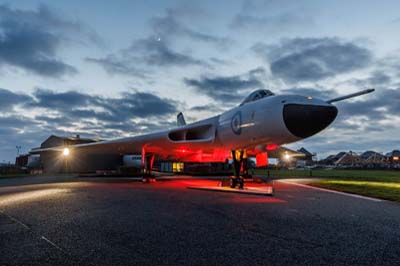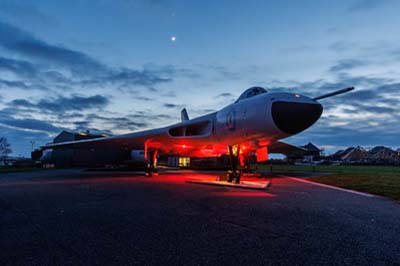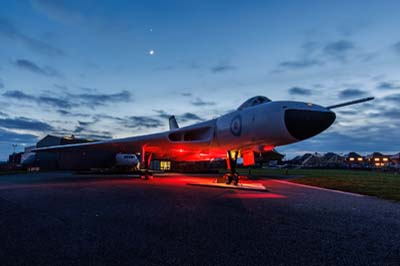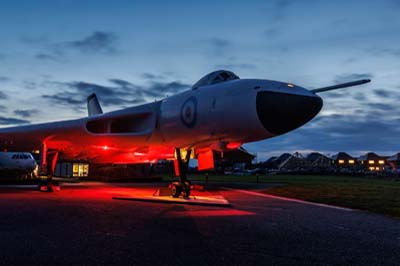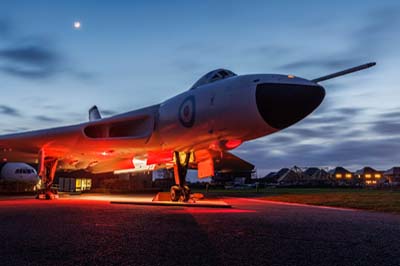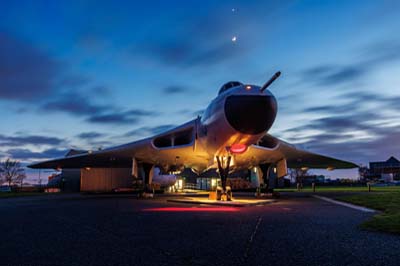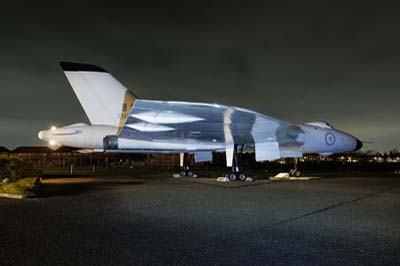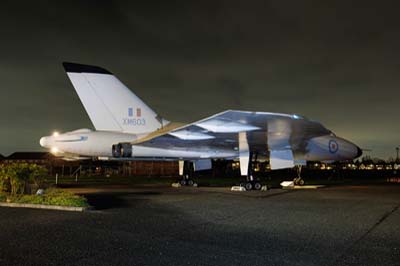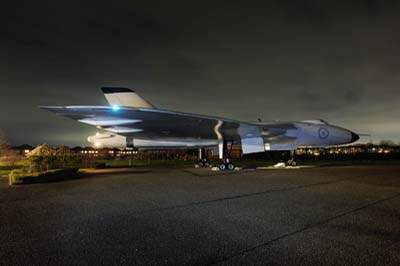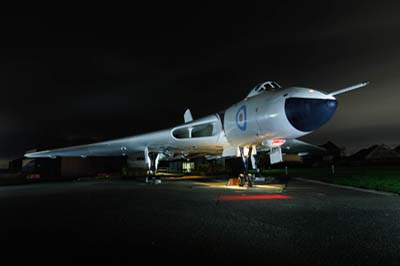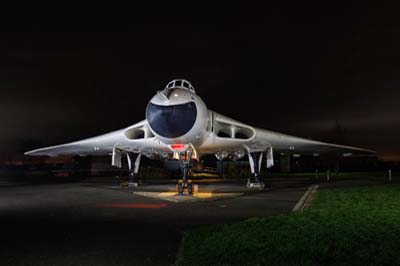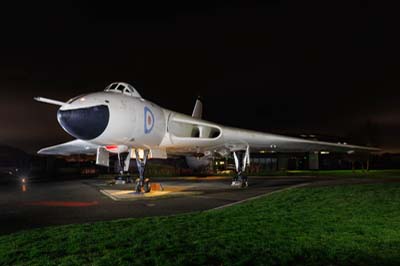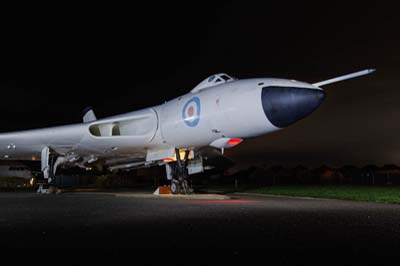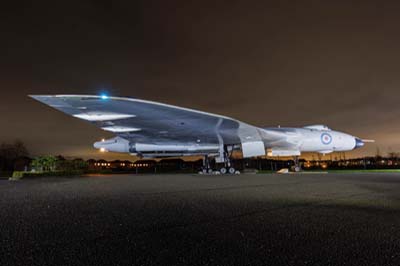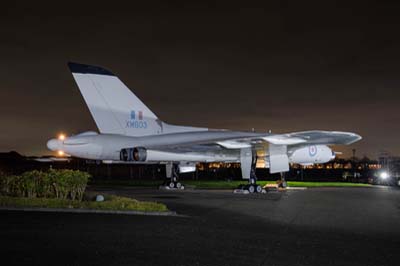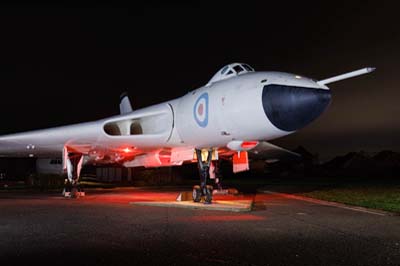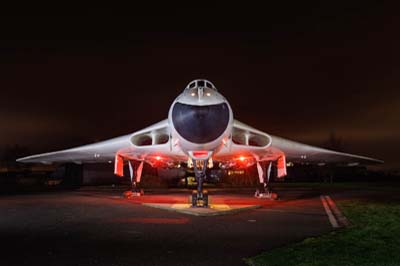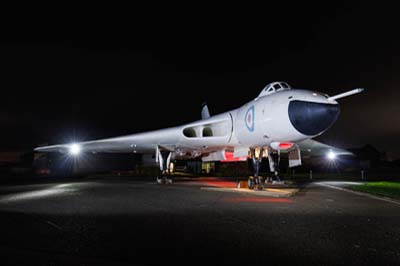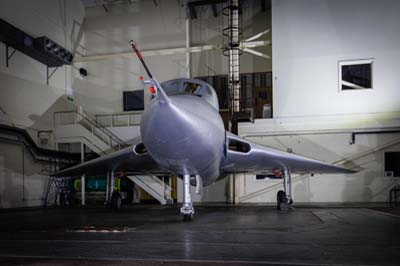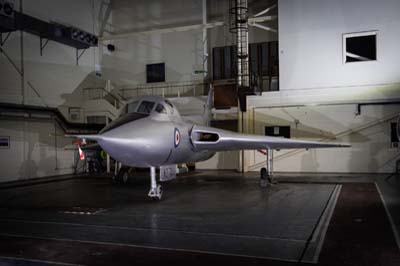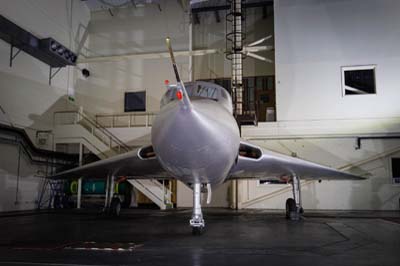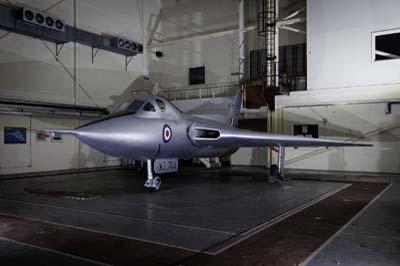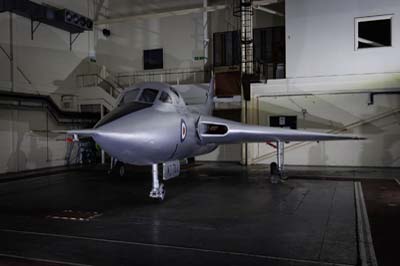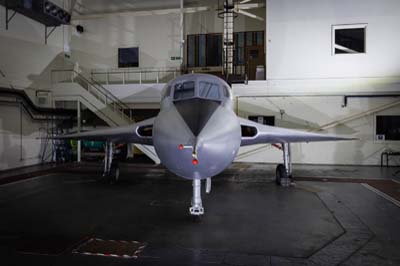Avro Heritage Museum
Woodford
February 1, 2025
|
| A Threshold organised night shoot at the Avro Heritage Museum which was opened on November 13, 2015. The event not only covered the museum's Vulcan B.2 XM603, but the rare Avro 707 which has been in storage for many years and is not yet on display at the museum. |
| Avro Vulcan B.2 (XM603). Delivered in November 1963 to 12 Squadron, as part of the Coningsby Wing, which shortly moved to Cottesmore in 1964. XM603 was transferred to the Waddington Wing in 1968, and joined 50 Squadron in August 1975, then 101 Squadron in December 1980, 44 Squadron in July 1981. It was retired to Woodford on March 12, 1983 from Waddington. It has now been repainted in its original anti-flash white paint scheme first applied when it entered service in 1963 as part of the RAFs V-Force. The Avro Vulcan production line was at Woodford. When the airfield was closed BAE agreed to fund the renovation of the former aerodrome fire station to become the new Avro Heritage Museum. |
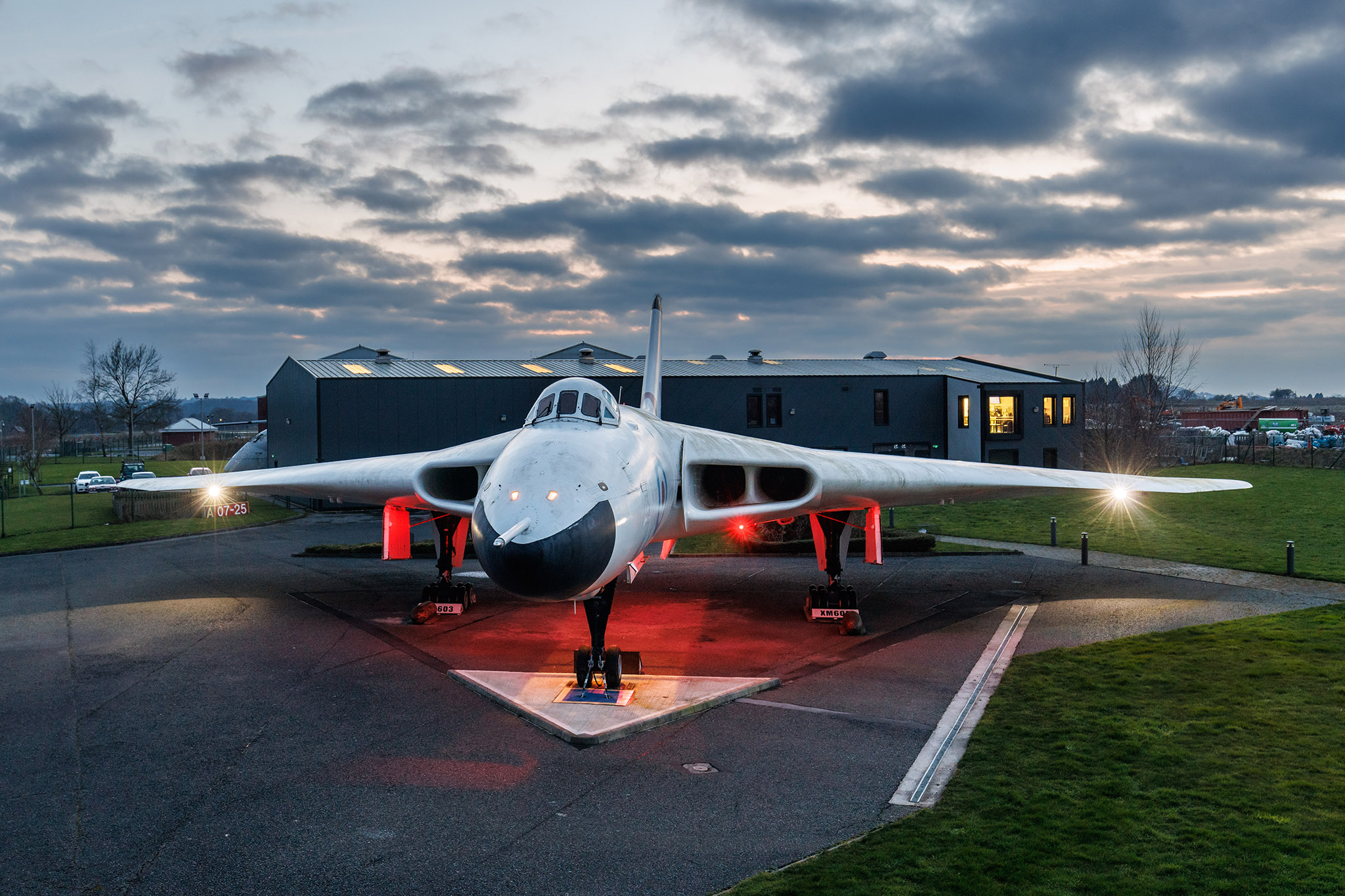 |
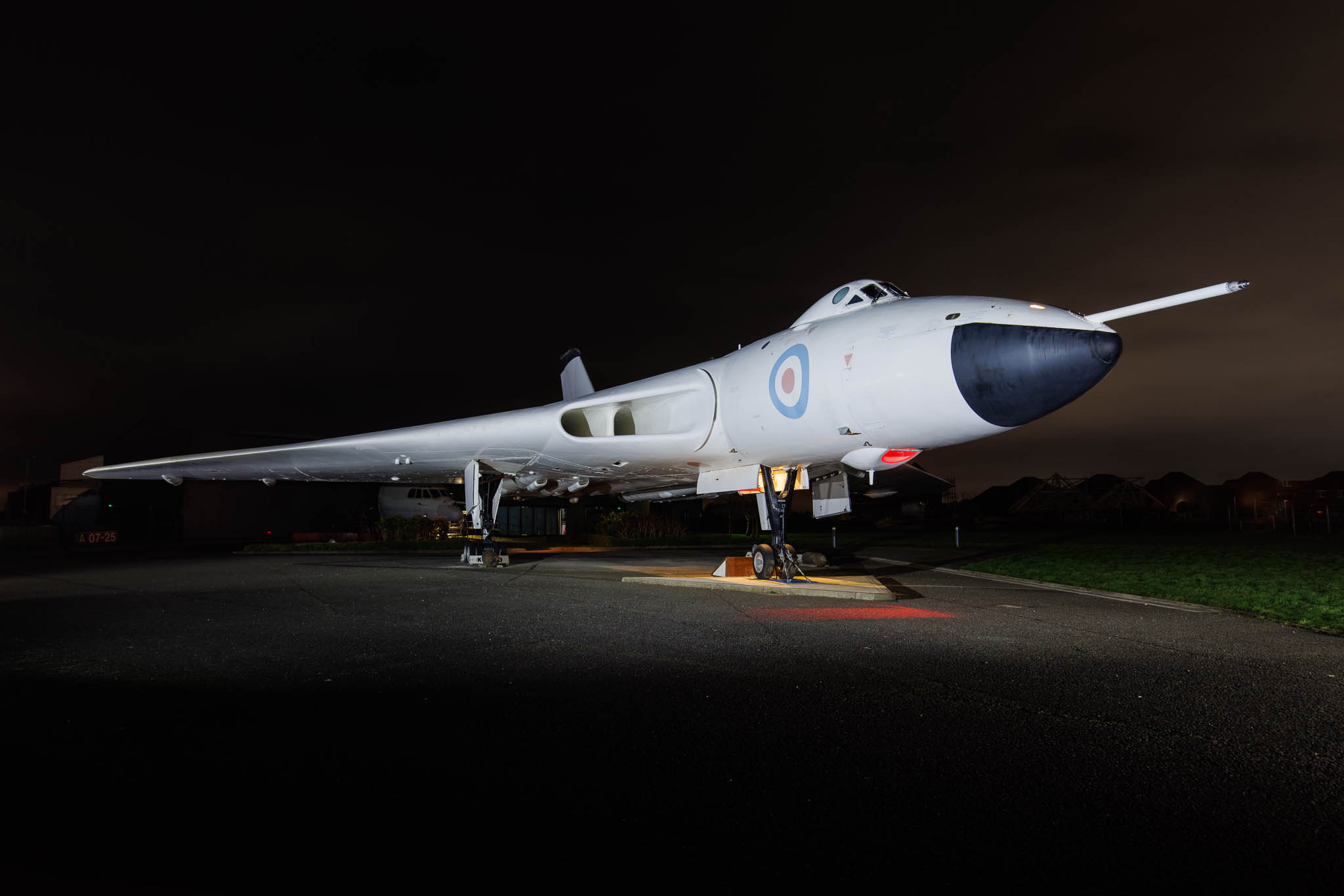 |
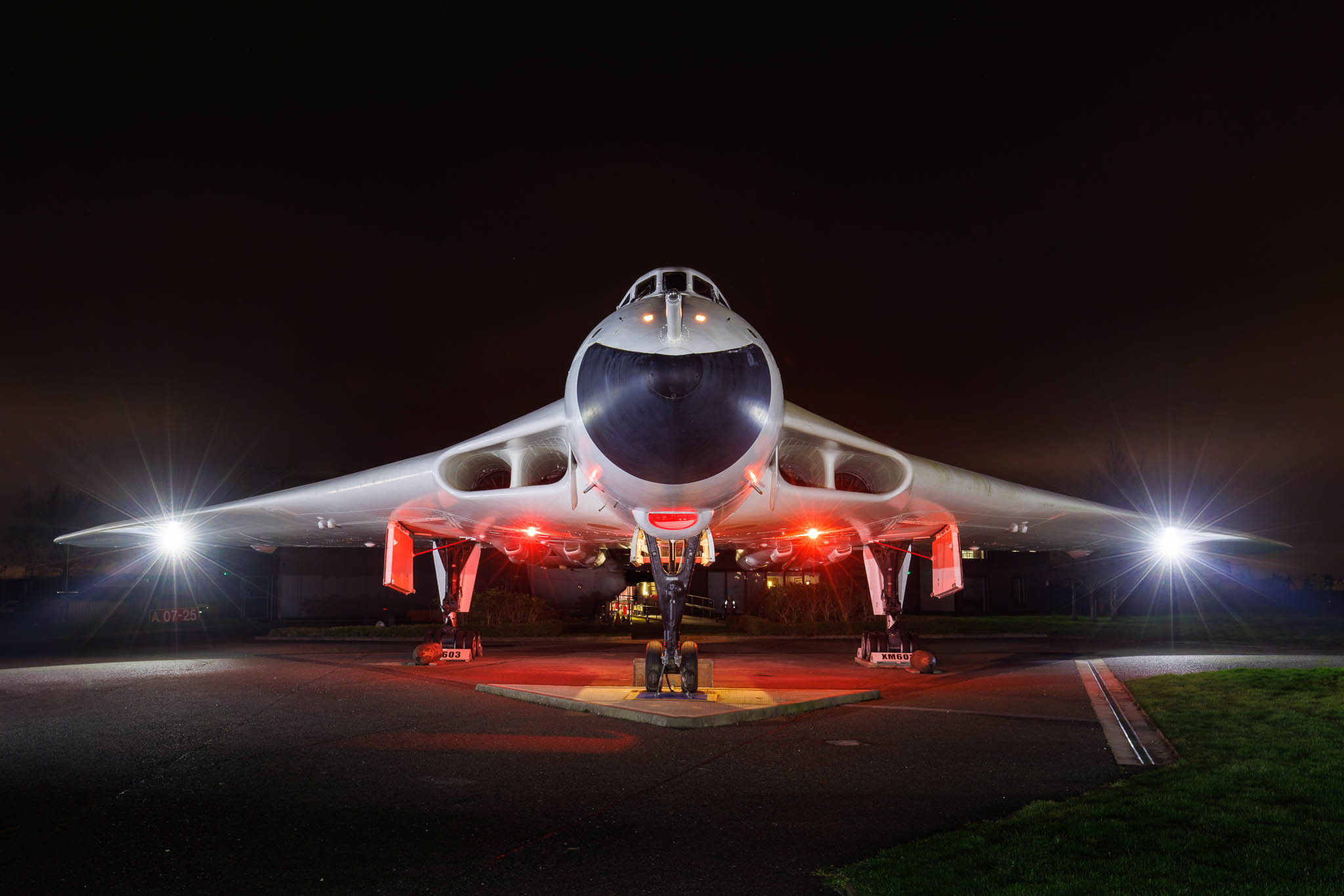 |
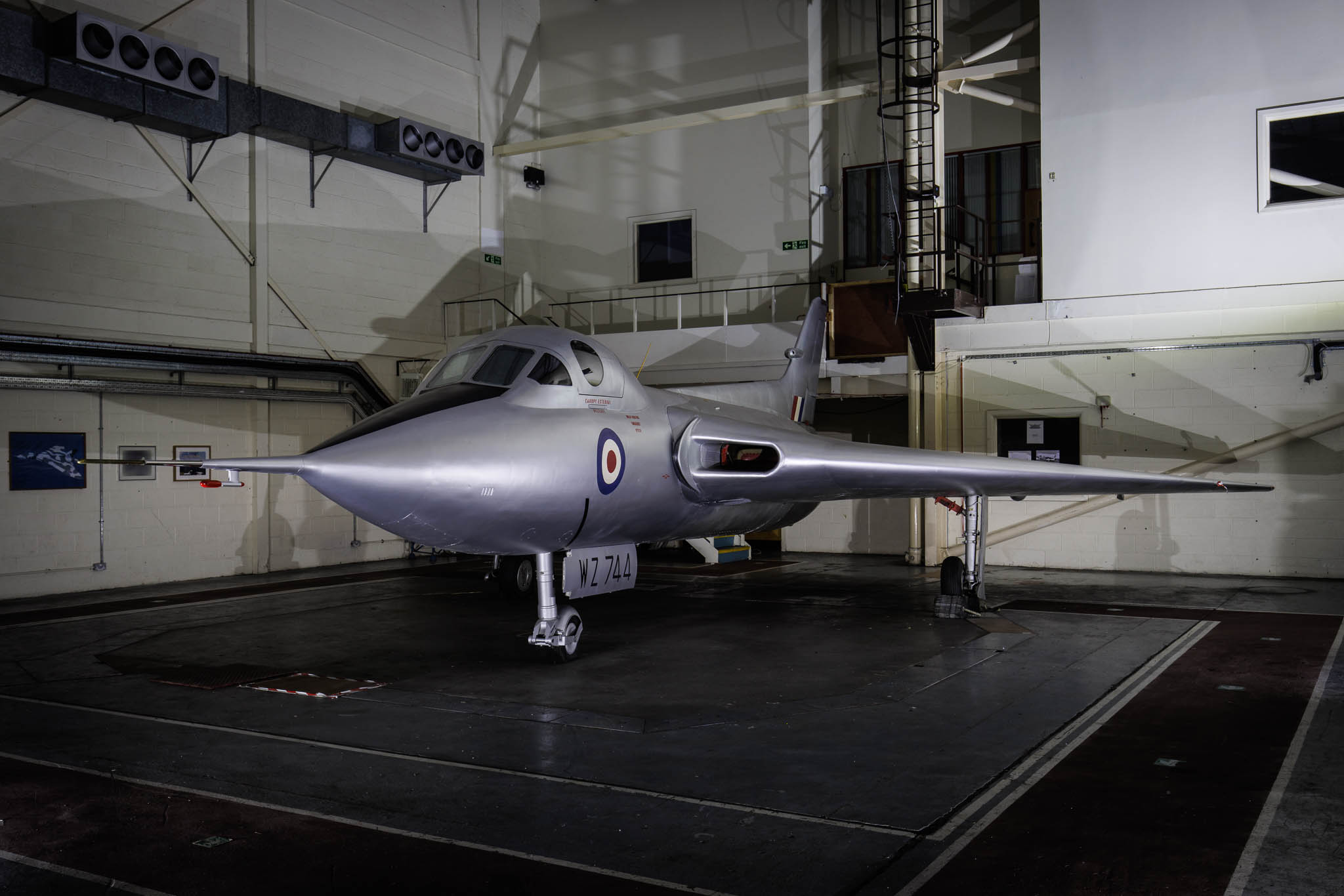 |
Avro 707C (WZ744). The AV Roe & Company (Avro) 707 was designed as a tailless, 'proof-of-concept' thick delta-wing for research purposes. The one-third scale design was based on the Avro 698 Vulcan, it was the first British built delta-winged aircraft. Vital data was gathered during testing for the Avro Vulcan project. There was an intention to eventually utilise them as jet trainers, to provide pilots with experience of handling a delta-winged aircraft, using fly-by-wire technology, in advance of the introduction of the Avro Vulcan.
The first Avro 707A (VX784) first flew on September 4, 1949 from Boscombe Down, however tragically 26 days later while testing its slow speed handling characteristics, pilot Eric Esler lost control and crashed, he was killed. Avro 707B (VX790) fitted with an extended nose section, flew for the first time on September 5, 1950. It flew until 1956 when it was damaged beyond economical repair in a landing accident, it ended its days on the fire dump at RAE Bedford. Another prototype (WD280) was fitted with a modified wing and transported to Australia for testing in 1954. It was eventually struck off charge in 1967 and transferred to the RAAF Museum at Point Cook, before passing to a private owner in 1999. In 1951 three additional Avro 707s were ordered as two-seat (side-by-side) trainers, designated Avro 707Cs. Only two were built (WZ736 and WZ744). As the first Vulcan's were found to be easy to fly and these small trainers were deemed unnecessary.
Both aircraft have survived, WZ736 was on display at the Manchester Museum of Science and Industry, until it was closed in 2021. The museum's collection was split up and found new homes. In January 2022, WZ736 was moved to the Boscombe Down Aviation Collection at Old Sarum airfield. WZ736 when photographed at Old Sarum in 2023.
The other Avro 707c, WZ744, first flew on July 1, 1953 from RAF Waddington eventually totalling 200 hours testing fly-by-wire electrically signalled hydraulic flying controls. Retired in 1967, it was transferred to the museum store at RAF Colerne and then to RAF Cosford in 1973. There it was put on public display at the RAF Museum for some years before returning to storage. In 2025 it was to be found at the Avro Heritage Museum. WZ744 as photographed in 1989. |
 |
